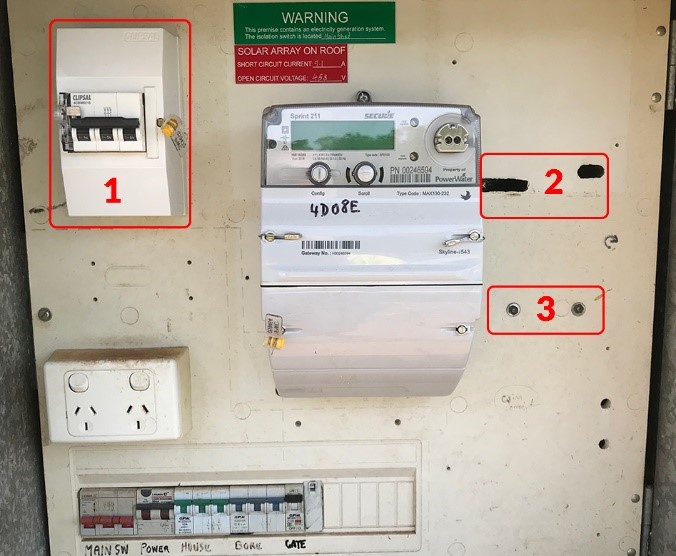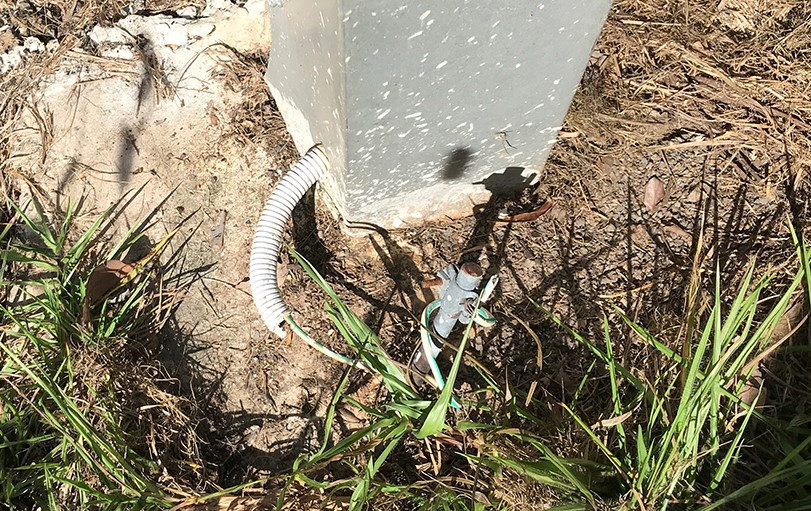Requirements for all electrical work on meter boxes and consumer switchboards in existing homes
This information bulletin details the requirements for replacing meter boxes or switchboards, including the addition of solar or generator inputs, or the changeover of a kilowatt hour meter and meter isolator in existing homes.
Electrical contractors must take into consideration that electrical installations in existing homes, especially old homes built over 30 years ago, may not meet modern electrical standards.
NT WorkSafe has noticed a trend of nuisance tripping occurring in one or more circuits after the replacement of a switch board and upgrade to residual current devices, due to the age of the existing circuits or a fault made during the original installation.
These requirements ensure that any works to existing electrical installations are efficiently and safely made in accordance with the laws, standards and the supply authority’s requirements.
Note: In most metropolitan areas and the majority of aboriginal communities, Power and Water Corporation are the supply authority, however, this may be subject to change.
Due diligence checks
Section 29 and 30 of the Electrical Safety Act 2022 requires examinations and tests to ensure any work on an electrical installation complies with Part 5 of the Electrical Safety Regulations 2024, and the AS/NZS 3000 Wiring Rules (the wiring rules).
As the electrical contractor, you are required to ensure all faults are found and rectified as the wiring rules do not allow you to revert back to circuit breakers if an unexpected fault occurs after you have installed a switchboard with residual current device protection.
NT WorkSafe strongly recommends that due diligence checks and instrument tests are completed before the switchboard replacement, so clients can be advised in advance of identified issues and the requirements to make their electrical installation safe and compliant. Consider building this into the client’s quote.
Section 8 of the wiring rules details all mandatory tests, further advice can be found in:
- AS/NZS 3017 - Electrical installations - Verification guidelines
- AS/NZS 3019 - Electrical installations - Periodic verification.
Common non-compliance issues with meter board upgrades

The above image shows three common non-compliance issues NT WorkSafe encounters with upgraded switchboards.
- Network Isolators need to be clearly labelled.
- All old meter holes need to be appropriately filled.
- Metering neutral bar metallic mounting bolts need to be covered with insulating material where not installed behind the kilowatt hour meter (silicon is not considered acceptable as it can be removed), alternatively use non-conductive (plastic) bolts, however it is best to locate the metering neutral bar to rear of meter box as per the wiring rules.
Reminder: All other electrical apparatus must be located outside the meter footprint as specified by the supply authority.
Earthing requirements
Copper and galvanised steel water pipes used as earth electrodes in old installations
Old installations in the Northern Territory utilized the underground copper water piping as an earth electrode for the earthing system. The main earth conductor was attached to the water pipe at the point it emerged from the ground, usually external to the house.
This presents risks where the old underground copper water pipe corrodes and ruptures, and is replaced with plastic plumbing piping. The replacement of all or part of the water piping may leave the installation without an effective earth electrode.
Galvanized steel water pipe were also used as a vertical earth electrode in old installations. In many cases these have corroded away.
It is mandatory in the Northern Territory that earth electrodes and galvanised steel earth electrodes are replaced with a vertical earth electrode when the switchboard is replaced.
Compliance requirements for replacement earths
For a replacement earth to be considered compliant with clause 5.5.5 of the wiring rules, electrical contractors are required to ensure:
- The connection to the earth stake is mechanically protected.
- The earth stake is labelled.
- The earth location is marked on the switchboard.
- The earth cable has mechanical protection; and
- The terminal connections are painted with galvanised paint.

The connection to the earth stake in the above image lacks protection, is not labelled, and has no mechanical protection, and signs of corrosion indicates the lack of galvanised paint.
Example
An electrical contractor hired to:
- Replace a switchboard in an old installation with a modern switchboard.
- Upgrade a switchboard to include a generation input (engine driven or inverter).
- Replace the meter box, or changeover the kilowatt hour meter and meter isolator.
The electrical contractor must ensure the maximum demand of the installation and the sizing of the consumer’s mains are correct and the neutral and earthing systems are still fit for purpose. The installation must comply with all the provisions of the wiring rules, including any conditions imposed by the supply authority.
Scenario 1
A house built in the early 1960’s has a switchboard comprising semi-rewirable fuses. The consumer’s mains comprise 7/.052 (10mm2) copper conductors, the main earth comprises a 7/.036 (4mm2) copper conductor wrapped, clamped or soldered onto the water pipe.
In quoting the job, consider the following:
- Due diligence tests to determine the state of the installation.
- Requirements imposed by the supply authority (metering & point of attachment).
- Will the 10mm2 mains meet the maximum demand requirements of a modern home?
- Will the 4mm2 earthing system meet the minimum requirements?
- Will the earth electrode meet the minimum requirements?
- Will the equipotential (water pipe) bond meet the minimum requirements?
- What size circuit breakers are needed to protect imperial cables?
- How many residual current devices need to be installed?
- How to record the verification readings once the work has been completed and tested?
Scenario 2
Installation of a generation system (engine driven or solar PV & battery) a on an existing dwelling.
In quoting the job, consider the following:
- All of the conditions discussed in scenario 1.
- The supply authority’s requirements for alternative supplies.
- Where solar panels are to be installed and the roof engineering requirements in Wind Region C.
- All the requirements of the Clean Energy Council.
- The requirements in the following Australian Standards:
- The AS/NZS 4777 series of standards.
- AS/NZS 5033:2021.
- AS/NZS 5139:2019.
Additional information
Information bulletins
- Installation of vertical earth (stake) electrodes.
- Certificate of Compliance (CoC) – Electrical Safety.
Checklist
Power and Water Corporation: standards, rules and drawings
- Standard drawings.
- Metering manual.
- Installation rules.
- Service rules.
Contact us
If you are in doubt, call 1800 019 115 and speak to a NT WorkSafe Electrical Safety Inspector before undertaking the upgrade.